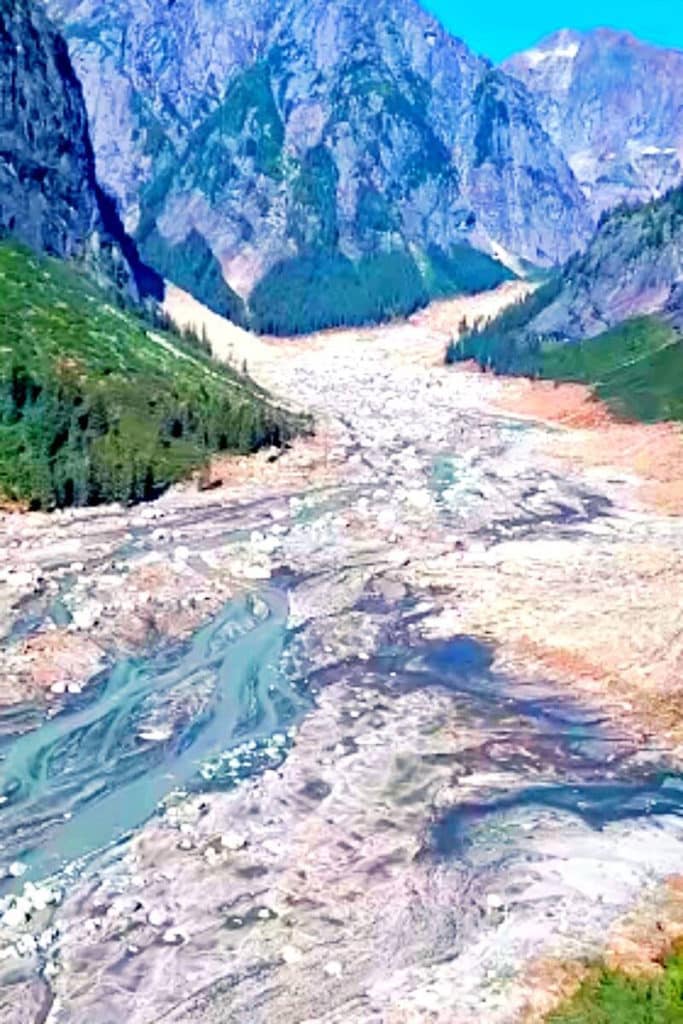
A massive natural landside into western Canada’s Ecstall River this year is impacting river flow and perhaps hampering access by countless salmon to run and propagate their species.
The Ecstall River is an important part of the widely heralded by anglers Skeena River drainage system in coastal British Columbia, not far from Ketchikan in extreme southern Alaska.
“Essentially, a whole side of a mountain collapsed into the very upper reaches of the Ecstall River and it caused a massive landslide about halfway down the river valley,” Greg Knox, executive director of the SkeenaWild Conservation Trust told the Prince Rupert Northern View on Sept. 20. “So it’s taken out the whole upper part of the river valley.”
The Ecstall feeds the Skeena River near the Pacific Ocean, about 20 miles southeast of the town of Prince Rupert, B.C.
The landslide occurred in a rugged coastal region where access is difficult, and unpopulated. Drone flights over the area are done to check on the river and salmon spawning. Knox told the Northern View that Stan Walker — with the government’s Fisheries and Oceans Canada – flew a drone over the area to check on its salmon and discovered the landside and videoed its devastation.
Silt, sediment, rocks, timber, and other debris washed into the upper Ecstall River, which could cover salmon, steelhead, trout and char eggs, suffocating them. This could greatly diminish successful spawning of those species and others as well.
Up to 100,000 fish could be affected by the landslide, says Knox, with virtually nothing that can be done to alter the impact of the natural event.
“It’s really just assessing what the likely impacts are, and there needs to be long-term monitoring to see how fish populations adapt over time,” says Knox. “It will likely take several years, potentially decades for the system to re-stabilize. Salmon will adapt, it’s just a matter of how long it will take.
“There are some significant tributaries in the lower Ecstall River that have large salmon populations. So hopefully they’ve been unaffected.”








